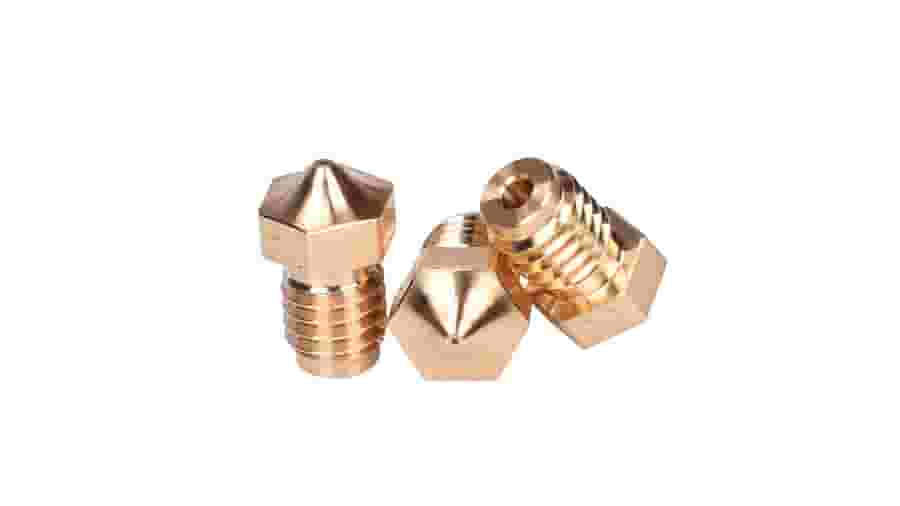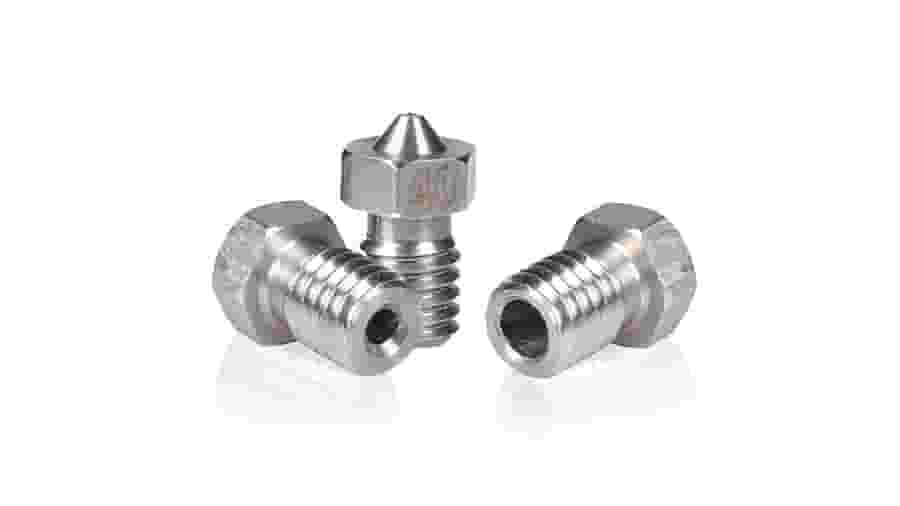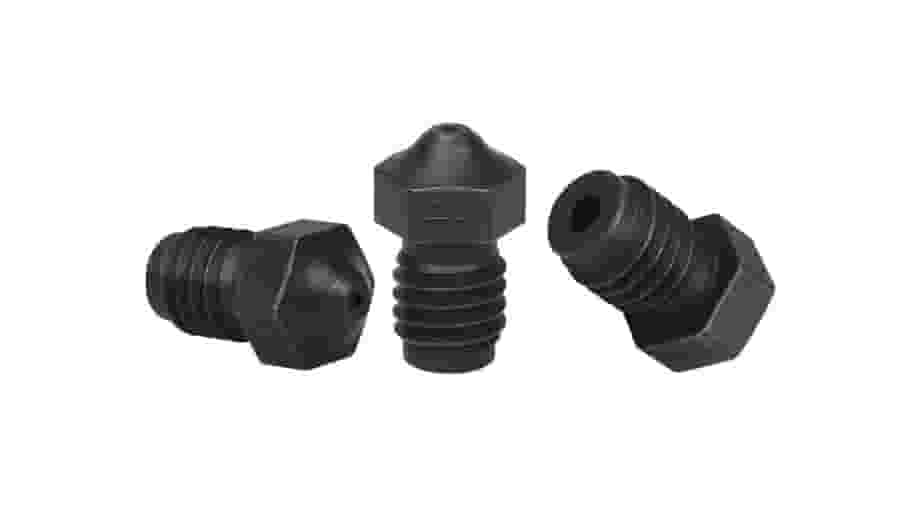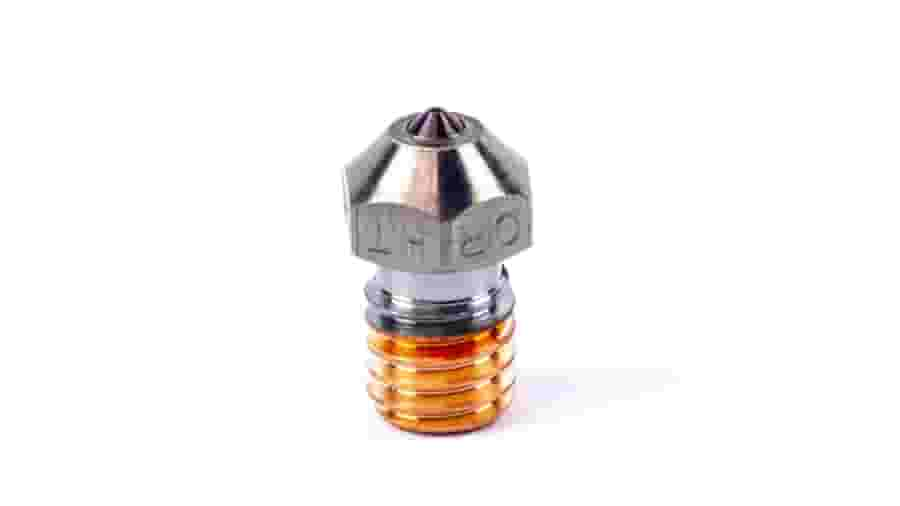Brass

Brass is the current standard material used in 3D printing nozzles (Source: Biqu)
Brass is by far the most common metal used for 3D printer nozzles. This copper-zinc alloy offers great heat transfer at a relatively low cost. However, while these nozzles tend to be inexpensive, brass isn’t the most resistant material and is highly vulnerable to wear.
Brass nozzles can deteriorate externally from every bump or scrape that might happen during the 3D printing process. Even though this is not immediately noticeable, the wear and tear builds up slowly over time, which can truly compromise important external dimensions of the nozzle.
Special 3D printing materials like carbon fiber and metal-filled filaments contain abrasive particles that can ruin the nozzle’s internal surfaces if used regularly. A damaged internal bore can compromise print quality, and the catch is, this erosion is virtually impossible to spot and diagnose. For this reason, brass nozzles are better used for printing non-abrasive materials.
- Maximum temperature: 300 °C
- Best used with: Non-abrasive filaments such as PLA, ABS, PETG, Nylon, and TPE
Best 3D Printer Nozzle: Types, Sizes & Materials
Stainless Steel

Stainless steel nozzles are slightly tougher than brass and are theoretically suitable for food-grade materials (Source: Biqu)
Stainless steel is another popular material used in nozzles, as it provides a slightly better wear-resistance than its brass counterparts. They also prevent, to some degree, melted plastic from getting stuck to its surfaces, keeping it tidier.
These nozzles don’t contaminate the print with lead, which can occur with brass nozzles. Stainless steel nozzles can therefore be suitable for food-grade materials with the proper precautions.
Stainless steel allows for a wider variety of filaments, but is still not recommended for heavy usage of abrasive materials. It’s also less thermally conductive in comparison to brass.
- Maximum temperature: 500 °C
- Best used with: Non-abrasive filaments and light use of abrasive materials such as NylonX, carbon fiber, glow-in-the-dark, metal-filled, wood-filled, and ceramic-filled filaments
Best 3D Printer Nozzle: Types, Sizes & Materials
Hardened Steel

As they’re quite wear resistant, hardened steel nozzles are recommended for printing with abrasive filaments (Source: Biqu)
Hardened steel nozzles are a major upgrade, as they’re tough enough to handle frequent use of abrasive materials and offer literally years of use without replacement. However, this material has an even lower thermal conductivity than the previous two materials and takes longer to achieve the target temperature.
Being such a hard metal, some claim that its internal surface is not as smooth as other “softer” materials, possibly leading to lower quality printing. Please consider all of the above before committing to these nozzles, as they’re also more costly than the regular ones.
- Maximum temperature: 500 °C
- Best used with: All materials, including heavy use of abrasive materials
Best 3D Printer Nozzle: Types, Sizes & Materials
Assembled Nozzles

Being the cream of the crop, assembled nozzles offer the best performance but are quite pricey (Source: MatterHackers)
Assembled nozzles are made from two separate parts that are joined together, each one made of a different material to leverage the best properties of each. We’ve already seen that some materials – hardened steel, for example – offer less thermal conductivity, even though they are highly durable.
Assembled nozzles usually have a bulk material with great heat transfer properties, while the inner part that makes contact with the filament has durable and abrasion-resistant properties. The idea is to have the best of both worlds in one single nozzle.
These special nozzles are specifically recommended for high-temperature applications and materials such as PEEK and carbon fiber filament. As we’ll see later, some of these nozzles include high-grade materials like ruby. Needless to say, assembled nozzles are far more expensive than regular brass and stainless steel varieties.
- Maximum temperature: High temperatures, but the exact maximum temperature varies between models
- Best used with: All materials, including heavy use of abrasive materials and engineering plastics like PEEK and Ultem